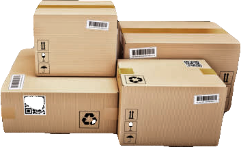What You Can Do Now to Prepare for Future Sustainability Regulations

Cast your mind back to 2015 when OSHA gave the deadline of June 1 to transition your Material Safety Data Sheets (MSDS) to Safety Data Sheets (SDS). How prepared were you for this change? Did you take action right away or make the swap last minute? Whether the experience was seamless or hectic for you, it no doubt required extra work by your team to comply with the new regulation. But in the years since, we’ve all come to appreciate how the unified SDS format allows our global businesses to collaborate with ease.
Well, guess what? Similar changes are likely coming soon! But this time it’s all about sustainability regulations.
A Sustainable Future
The world has its sights set on a sustainable future – and part of that is sustainable manufacturing and packaging. As a result, the UN Department of Economic and Social Affairs has set 17 goals for Sustainable Development with specific targets for 2025 and 2030. One goal set by the Ellen MacArthur Foundation, in collaboration with the UN Environment Program, is to achieve 100% reusable, recyclable, or compostable plastic packaging by 2025. So, if you are a manufacturer of consumer-packaged goods (CPG), the opportunity to be a leader in sustainability is not only here now, but the sustainability regulations are likely not far behind.
Sustainable Packaging Regulations Now and in the Future
We recently caught up with Karen Kavanagh Mack, Partner at Burke, Warren, MacKay & Serritella, P.C. and member of the Illinois State Bar Association’s Food Law Section Council, to hear her outlook on current packing regulations and what CPGs can do to prepare for anticipated changes in the not-so-distant future.
“Assessing the impact of food-related waste on the environment is one of the major emerging areas that state and local governments, along with recently growing federal support, are setting long-term sustainability goals around,” said Mack. “While laws and regulations addressing food waste (which includes waste from food packaging) in the environmental context are still in their infancy, it is likely that growing interest in this area could result in fast-tracking the issue in the coming months and years.”
When looking at current laws and regulations, these are a few that some manufacturers in the United States are already complying with:
– 16 states have enacted statewide regulations around packaging waste, which tend to target single-use plastics, shopping bags, and increasing recycling targets. (Source)
– There are over one hundred local ordinances restricting the use of polystyrene containers and utensils. (Source)
– The state of California’s Rigid Plastic Packaging Container (RPPC) Law was enacted to limit the amount of disposed plastic waste going to landfills and promote the use of recycled plastic. Oregon and Wisconsin have enacted similar laws. (Source)
– In Illinois, HB 3068, which created the Statewide Materials Management Advisory Committee (SMMAC), was signed into law by Governor Pritzker in 2019. SMMAC is comprised of a group of associations and businesses who are charged with identifying ways to manage waste by reusing it or otherwise diverting it from disposal in Illinois landfills. Recommendations of the committee are due to the Governor on July 1, 2021, and those recommendations will include ways to eliminate food waste – one of the key issues under consideration by the committee.
What can we expect in the future at the Federal level? In February 2020, the “Break Free from Plastic Pollution Act” was introduced in the House of Representatives. After losing traction in the following months, the bill was recently re-introduced in March 2021 as the “Break Free from Plastic Pollution Act of 2021.” Although still in the early stages of the legislative process, if passed in its current form, this bill would make the manufacturers of packaging, paper, and single-use plastics fiscally responsible for the collection, management, and recycling of those products after consumer use. It also sets a minimum percentage of products that must be reused, recycled or composted. Thus, as a CPG, you’d be faced with many changes to your production process. Materials that you use today may not meet the sustainability standards a few years from now. And updating your packaging material could result in a domino effect of changes – such as needing to utilize a new type of adhesive. While there is much debate as to whether this bill goes too far or not far enough, it is anticipated that legislation in some form will be passed in the near future to address the ever-mounting concern that food-related waste presents to our collective futures.
In addition to waste reduction strategies, food packaging manufacturers will need to re-evaluate their processes to eliminate the use of certain chemicals, namely PFAS (known as “forever chemicals”), in their products. Under a voluntary agreement with the FDA, the sale of certain short-chain PFAS used for grease-proofing paper and paperboard products that come in contact with food, including 6:2 fluorotelomer alcohol, will be phased out by three major manufacturers of short-chain PFAS. While the phase out will be spaced out over three years, implementing a plan to eliminate PFAS from your products should be an immediate priority. In addition to these voluntary phase outs, more regulation of PFAS are on the horizon, so eliminating them from your products is simply a strategic business move.
What You Can Do Now to Prepare for Future Sustainability Regulations
Mack recommends to her clients that they stay ahead of the curve and take advantage of current voluntary programs that are available at little to no cost. One program currently being run by the Illinois Sustainable Technology Center at the University of Illinois is the Zero Waste Program. This program not only helps participants be better stewards of the environment, but also has resulted in real cost savings for CPGs. The program is free to eligible participants and includes waste audits to analyze inputs and outputs within a facility, as well as management planning to improve existing waste management practices and prevention of great waste diversion. There are similar services provided by private consulting firms, but they are not typically free.
Mack also recommends to her manufacturing clients to add sustainability and waste reduction to their long-term planning. Engaging outside assistance to get a better picture of where you are in terms of sustainability and to develop a waste reduction strategy is a worthwhile investment for the future of your company.
We’d like to thank Karen for her insights into this very important topic. The coming regulations will undoubtedly impact our businesses, and more importantly our world, in the very near future!
Let’s Get Started
Looking for ways to reduce waste and consume less energy in your manufacturing process? We can help! By assessing your gluing application, we may be able to find ways to help you achieve more sustainable practices and be prepared for future sustainability regulations. Please contact us today to get the conversation started.












